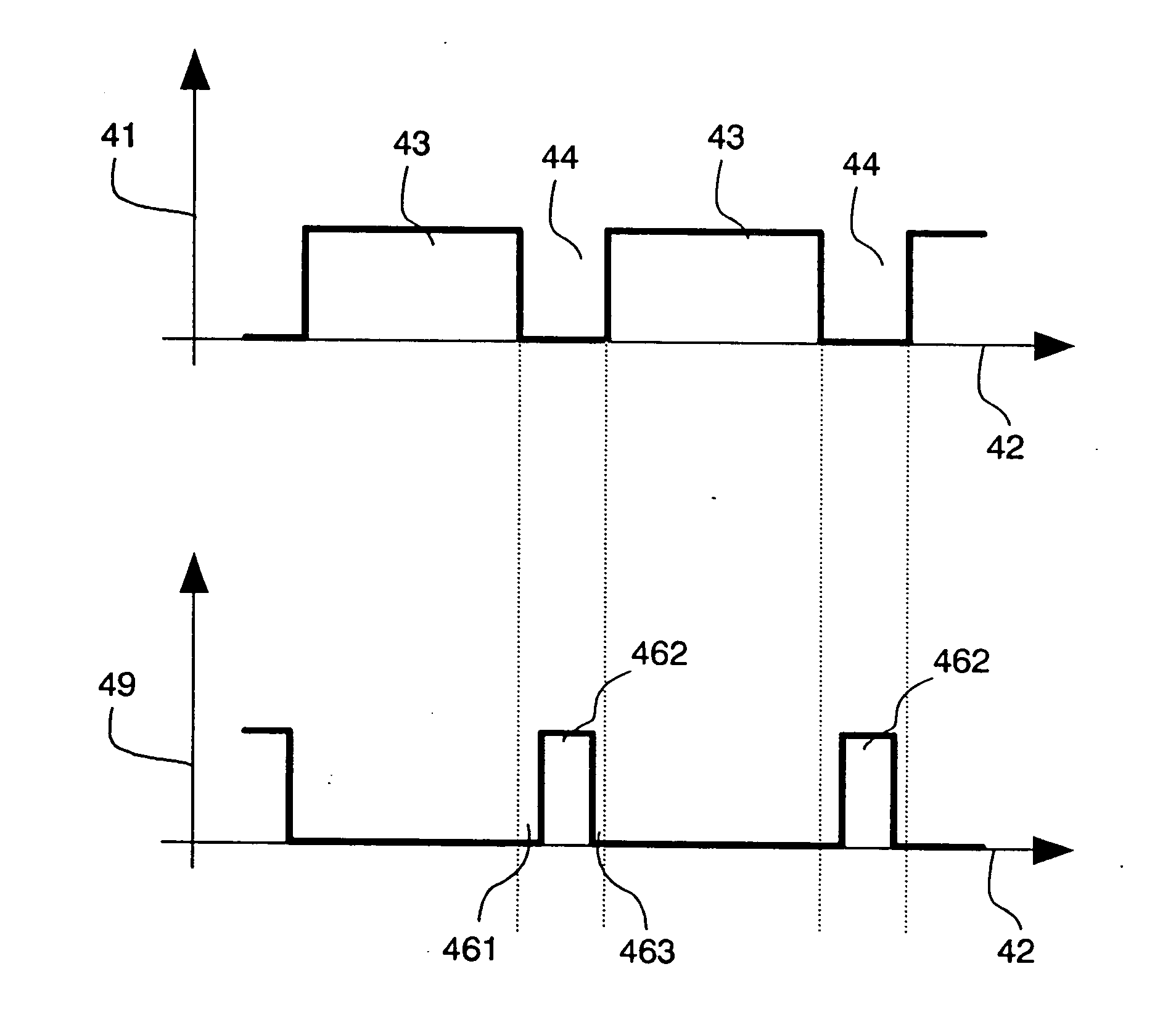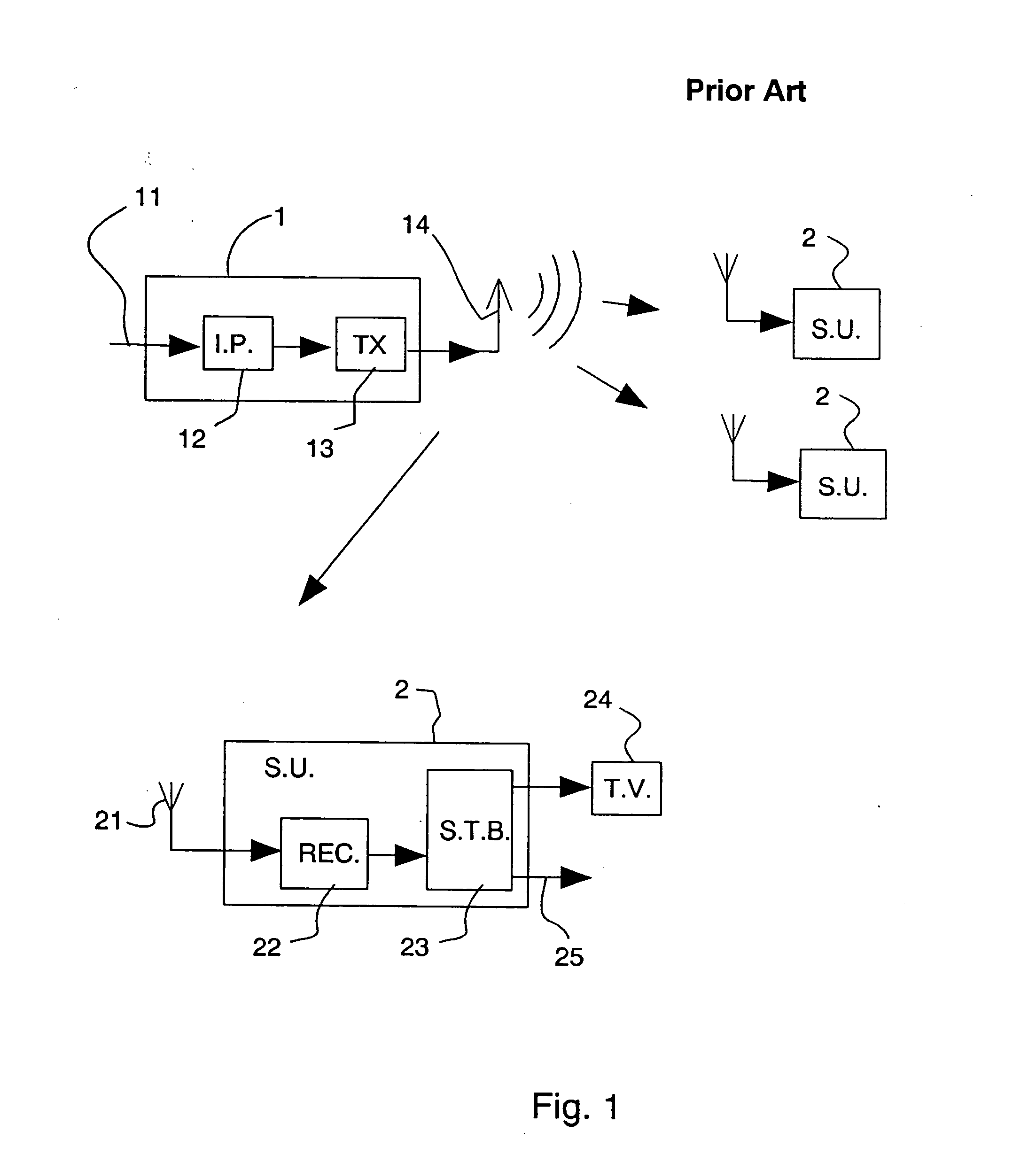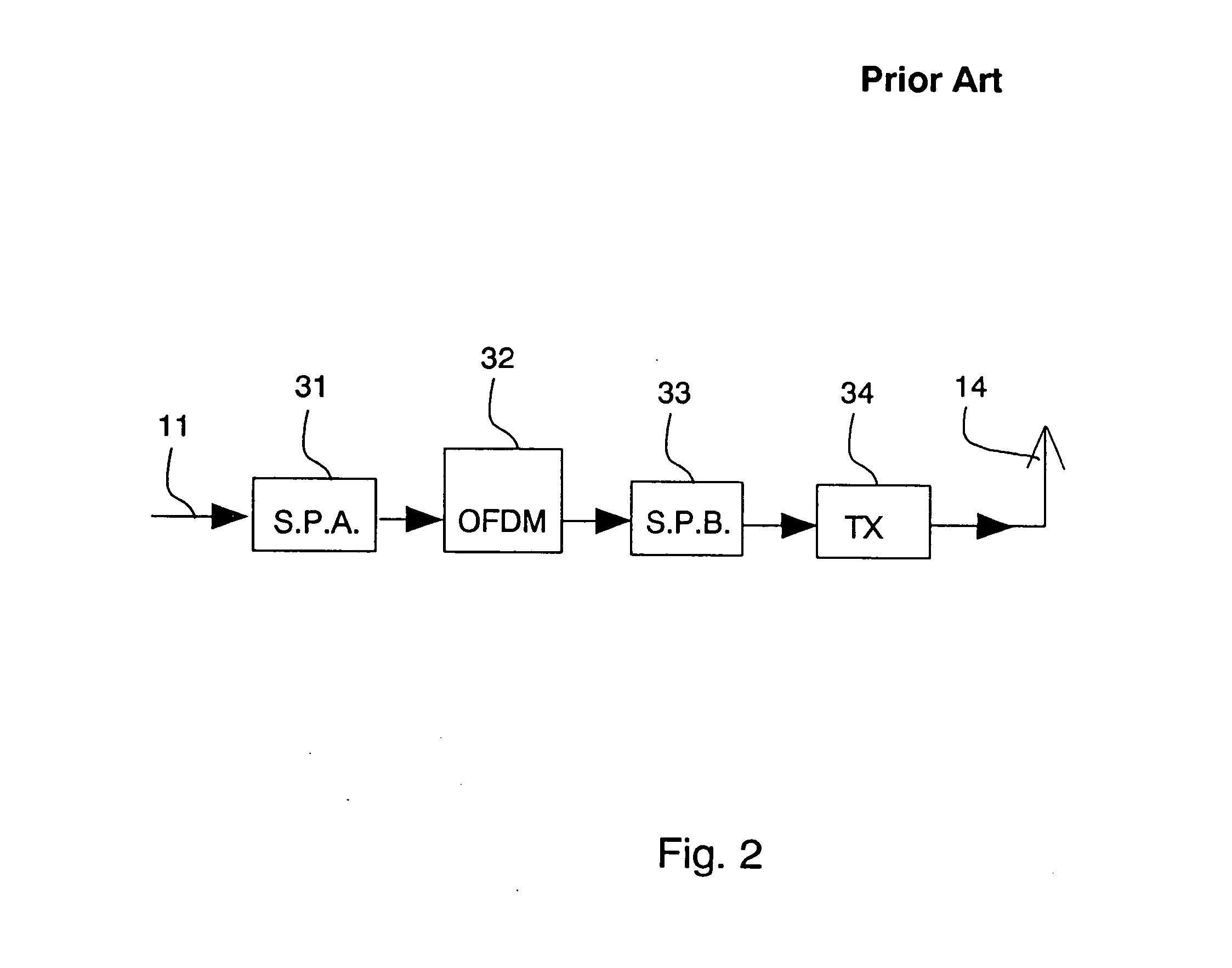Bi-directional communication channel
- Summary
- Abstract
- Description
- Claims
- Application Information
AI Technical Summary
Benefits of technology
Problems solved by technology
Method used
Image
Examples
Embodiment Construction
[0108] A preferred embodiment of the present invention will now be described by way of example and with reference to the accompanying drawings.
[0109]FIG. 1 illustrates a prior art digital information broadcasting system using OFDM. The system includes a base station 1 that transmits to a plurality of subscriber units 2.
[0110] A data input channel 11 brings to the base station 1 the video, audio and / or data to be broadcast to the subscriber units 2.
[0111] An information processor 12 performs the required modulation, using for example QPSK, M-QAM, M-DAPSK or another digital modulation method. The OFDM transmitter 13 includes means (not shown) for performing an Inverse FFT (IFFT), DAC means for converting the digital signals to an analog voltage and for generating an RF signal modulated accordingly. The RF signal is then transmitted through antenna 14 and the wireless channel to the subscriber units 2.
[0112] A subscriber unit 2 (receiver) includes means for performing the abovedeta...
PUM
 Login to View More
Login to View More Abstract
Description
Claims
Application Information
 Login to View More
Login to View More - R&D
- Intellectual Property
- Life Sciences
- Materials
- Tech Scout
- Unparalleled Data Quality
- Higher Quality Content
- 60% Fewer Hallucinations
Browse by: Latest US Patents, China's latest patents, Technical Efficacy Thesaurus, Application Domain, Technology Topic, Popular Technical Reports.
© 2025 PatSnap. All rights reserved.Legal|Privacy policy|Modern Slavery Act Transparency Statement|Sitemap|About US| Contact US: help@patsnap.com



